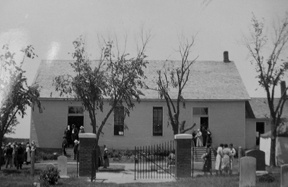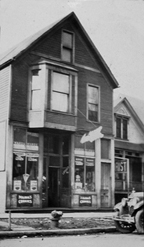Early members of the BIC Church
 The Brethren in Christ Church began sometime between 1775 and 1788, and the place of origin was near the present town of Marietta in Lancaster County, Pennsylvania. For the most part, our founding mothers and fathers had an Anabaptist background and were deeply affected by the revivals of the great awakening of the eighteenth century and the Pietistic movement, which was spread in America by the Moravians and German Baptists. These revivals emphasized a personal, heart-felt conversion experience.
The Brethren in Christ Church began sometime between 1775 and 1788, and the place of origin was near the present town of Marietta in Lancaster County, Pennsylvania. For the most part, our founding mothers and fathers had an Anabaptist background and were deeply affected by the revivals of the great awakening of the eighteenth century and the Pietistic movement, which was spread in America by the Moravians and German Baptists. These revivals emphasized a personal, heart-felt conversion experience.
The earliest Brethren in Christ called themselves simply “the Brethren.” Outsiders often referred to them as “River Brethren” since they lived, for the most part, along the Susquehanna River. We know that by 1788 a group of “the Brethren” immigrated to Canada and became known there as the “Tunkers,” a reference to their practice of baptism (from the German word meaning “to dip”).
Bethel BIC Church, Kansas
 Discipleship for “the brethren” was expressed in practical ways. It involved the avoidance of “worldly” activities such as politics and certain amusements such as card playing. Dress was simple and unadorned by jewelry, bright colors, or frills. Their plain uniform dress made them stand out in their communities which suited their belief of being a separate people called out by God. The fact that they were farmers and spoke German likely affected both their simple theological stance and their desire to be separated from the world.
Discipleship for “the brethren” was expressed in practical ways. It involved the avoidance of “worldly” activities such as politics and certain amusements such as card playing. Dress was simple and unadorned by jewelry, bright colors, or frills. Their plain uniform dress made them stand out in their communities which suited their belief of being a separate people called out by God. The fact that they were farmers and spoke German likely affected both their simple theological stance and their desire to be separated from the world.
The early Brethren in Christ took their name seriously – they believed and practiced that they were a brotherhood in Christ. Their manner of meeting was symbolic of the concept of brotherhood. For most of the first 100 years of our church, worship services were held in the homes of members. And even when the Brethren began to construct buildings referred to as meetinghouses, they kept them simple with pews surrounding on three sides and an un-elevated pulpit. Thus the Brethren met in common around the Word of God. Very early in our church’s history, members began to move and take their beliefs with them.
1894: The first city mission of the BIC Church (Chicago, Illinois)
 We know that by 1788, a group of “the Brethren” immigrated to Canada. Other Brethren in Christ moved westward from Pennsylvania, settling in Ohio, Indiana, Michigan, Iowa, Kansas, Oklahoma, and California.
We know that by 1788, a group of “the Brethren” immigrated to Canada. Other Brethren in Christ moved westward from Pennsylvania, settling in Ohio, Indiana, Michigan, Iowa, Kansas, Oklahoma, and California.
At the time of the Civil War in the United States, the Brethren decided to record themselves under the present name of “Brethren in Christ.” In 1879 the North American Church (US and Canada) was formed into a General Conference, which gives overall guidance to the regional and local churches. The formation of a General Conference made systematic evangelism a possibility. In 1894 a home mission work started in the city of Chicago, and in 1898 the first foreign mission work began in the African nation of Rhodesia (now Zimbabwe).
Today, Brethren in Christ churches can be found all across the United States and Canada, and in more than twenty-three countries around the world.

